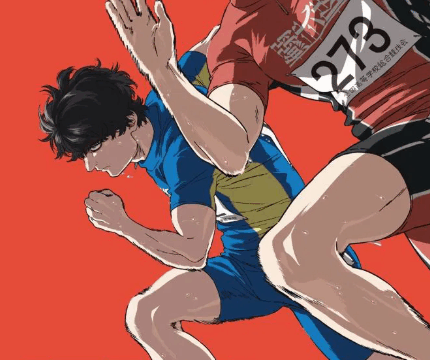English Dub Season Review: Dandadan Season Two
When Dandadan first came around last year, my only expectation was that it would be another basic supernatural anime with teenage protagonists and nothing else. However, upon watching its first season, I found myself completely shocked at how it transcends its straightforward premise, not just in its storytelling but also in the animation itself. Dandadan created a seamless blend of multiple genres like action, rom-com, and supernatural horror to craft a chaotically bonkers and genuinely heartfelt adaptation of Yukinobu Tatsu’s manga series. Not only that, but it also boasted some incredible animation and stylized art designs that demonstrated Science Saru’s efforts in unique creativity. As a result, it became one of my favorite anime shows of last year, with Momo and Okarun becoming the next big anime couple worth rooting for. Of course, this also puts immense pressure on its second season, which aims to be bigger and more enthralling than Momo and Okarun’s first encounter with aliens and spirits.
This turned out to be the case with the second season’s first four episodes, which occurred immediately after the season one finale. These episodes chronicled Momo and Okarun assisting Jiji in confronting a dangerous ghost haunting his home and the Kito Family’s sacrificial ritual involving a gigantic Mongolian death worm. The spirit, known as the “Evil Eye” (Anne Yatco), ends up possessing Jiji, creating more problems for Momo and Okarun. Afterwards, the season has them dealing with Evil Eye being a part of their “family”, with Jiji seeking to control the relentless poltergeist and Okarun striving to get stronger in case Evil Eye steps out of line. Of course, the romantic tension between Momo and Okarun also plays a role in season two, with the two becoming closer than ever.
Given the high praise of season one, season two, which has Fūga Yamashiro co-directing with Abel Góngora, had plenty of huge shoes to fill. I’m not just referring to its translations from some of the source material’s most significant moments, but also its developing narrative that tests Momo and Okarun’s abilities and their evolving relationship. This is evident with the introduction of Evil Eye, who appears to be more menacing and formidable than the previous foes the characters encountered. In addition to his tragic backstory involving his sacrificial death, Evil Eye possesses a blind rage towards humanity and enhanced abilities, including his power to drive anyone to suicide. This makes him a complicated “ally” for the protagonists to endure, especially with Jiji’s body on the line, utilizing only hot water to suppress his anger and avoiding any type of cold water, including soy sauce. Evil Eye’s introduction not only added compelling stakes in the team’s dynamic but also emphasized the characters’ depth, mainly Jiji for his generosity and Okarun for his desire to protect Momo from harm.
While it may not match the surprising emotional depth of one of the season one episodes, “To a Kinder World”, the “Evil Eye” arc never fails to push the limits of its animation and color palettes to convey some of the most thrilling and ambitiously stylized sequences in an anime. The most notable examples are the visual kei band, Hayashi, in “We Became a Family”, and Okarun and Aira’s battle against the doppelgänger composers in “We Can Do It, Okarun!”. Hayashi’s exorcism was undoubtedly superb for its heavy metal-infused music and rich color palettes, but “You Can Do It, Okarun!” stood out as my favorite episode of season two. The black-and-white palettes of the composers’ spiritual realm, combined with ambitious direction and the Ninth Symphony score, convey a harmonious musical piece that’s exhilarating for the eyes and soothingly balanced for the ears.
The season also covers the kaiju arc in the final three episodes. These episodes not only focused on Momo and Okarun confronting a massive kaiju to retrieve one of Okarun’s balls but also introduced viewers to another ally, Kinta Sakata. While he possesses knowledge of science fiction, which played a key role in the confrontation, Kinta has a socially awkward phase similar to Okarun. However, his crude misunderstandings make him more unwelcoming than Okarun. The tenth episode, “The Secret Art of Being Attractive”, faced a challenging task of making Kinta’s seemingly annoying personality tolerable, similar to what the creators confronted when developing Aira in season one. Through Ai Yukimura’s screenplay, that episode was able to do so by exploring the different phases of social awkwardness in teens through Okarun and Kinta’s distinct actions, mainly Kinta unthinkingly following Okarun’s footsteps through his belief in “spicy talk”.
Dandadan certainly had big shoes to fill when it came to season two, especially with its fantastic success with season one. With the introductions to Evil Eye and a massive kaiju, the series aimed to retain its multi-genre balance from season one while also keeping its concept refreshing through its developing narrative and style. Fortunately, directing duo Fūga Yamashiro and Abel Góngora managed to accomplish this seemingly impossible goal by effortlessly expanding upon the show’s uniquely insane premise while maintaining the grounded nature of its character moments, notably Okarun and Momo’s relationship. The cliffhangers in each episode were undoubtedly frustrating, much like they were in season one, but the show did more than enough to heighten everyone’s anticipation toward the continuing adventures of the unlikely underdog team. With its stellar dub cast, great direction, musical score, and incredible animation from Science Saru, season two further highlights Dandadan as a visually stylized acid trip that’s miraculously balanced with its convincing teen romance and dynamically fun misadventures. If you haven’t been keeping up with this series, you’re clearly missing out on this uniquely fascinating experience.























"There are also other characters that come and go (also owned by the Warner Bros. Discovery conglomerate media company)."
Huh. Is that just referring to other characters from the show itself, or is this implying that the new season is going to have cameos from other WBD IPs